The challenge of designing and producing the new inpres series lay in increasing flight distance by two clubs in all clubs, not simply the irons. Yamaha accepted this challenge even for the drivers, from which there is no clubbing up. The utmost priority was to increase flight distance in the spirit of UD+2.
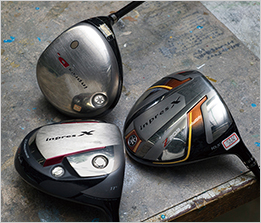
3. Even the fairway woods and drivers deliver on the promise of +2.
Not for every golfers. Narrow the target users.
As such, there had to be a way to deliver on the promise of longer flight distance.
Takezono admits that the challenge confounded him because the new inpres concept of +2 flight distance required him to increase flight distance for woods despite the fact that there's no +2 clubs up in FW#3 nor Driver.
"Initially, there was talk of creating woods alongside irons for the RMX UD+2 series in 2014," Takezono recalled. "But honestly, I thought it would be pretty difficult to make drivers that delivered two extra clubs' flight distance, particularly within the framework of the RMX series because we sold it as a system of customizing clubs for each golfer. The shaft sleeve absolutely had to be adjustable, but that function ate up weight and handcuffed us in the process of club head design. I thought the only way was to lengthen the shaft and make it easier to swing, but that would make it even harder to deliver on the promise of distance.”
The release of the 2014 series passed, and in that time the decision was made to divide RMX and inpres into two separate product lines. The split cleared the fog for Takezono. "Explicitly defining the target golfer helped me see that adding an extra 20 yards was within reach," Takezono said.
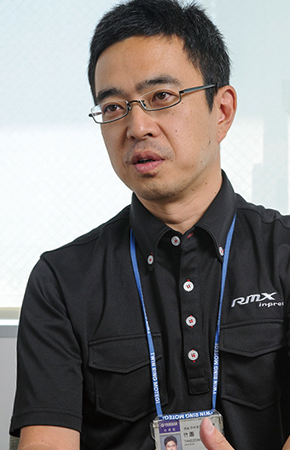
Golf HS Division
Product Development Group
Driver/Fairway wood/Utility
-
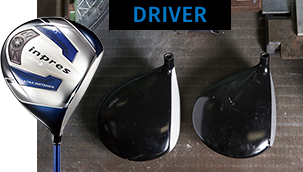
Left: The offset design for enhancing the low COG effect -

The unique structure of the three-wood, with tungsten throughout the sole. Enhanced flight distance through a dramatically lower COG! -
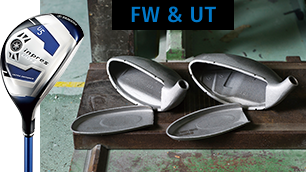
Higher kick velocity due to cupped face and lower COG owing to thick sole!
The product line started from the desire to help golfers regain the distance they'd lost.
Inside the inpres UD+2 driver head lies the secret to the highest COG angle ever achieved: a large bulge on the back side of the heel that adds roughly 35 g in just the right place. This massive amount of saved weight seems like a groundbreaking achievement for a carbon body, and serves as proof of Yamaha's innovations in thin-wall technology. This amount of freedom to redistribute weight would be surprising even for a full-sized titanium club head.
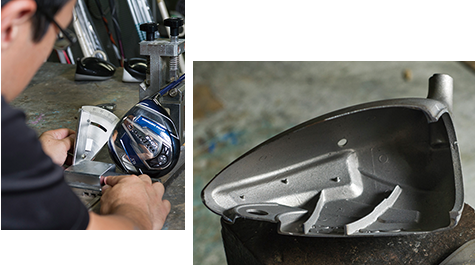
With optimal impact, flight distance will definitely increase.
There are two reasons golfers struggle with a lack of flight distance. The first is waning strength that saps distance even when the ball is struck squarely. The other is poor impact that prevents the player's power from translating into distance. "The new inpres UD+2 series targets the latter problem," Takezono explained. "We designed these clubs to add 20 yards for the average golfer that struggles with a slice or inconsistent contact." The thickness of the faces are optimized to deliver Yamaha's signature high kick velocity to a wide area in tune with the target golfer's contact point distribution. In addition, the COG angle is 34 degrees, the highest ever for Yamaha.
"To help golfers square up the ball, we have to increase the club head's capacity for clean contact," Takezono said. "Placing the center of gravity in the center of the face optimizes the effects of kick velocity. Furthermore, we designed even the drivers with strong loft in an effort to prevent energy loss." The description of a driver with strong loft was a first for me. The advertised loft of the typical driver is higher than the true loft, but that is not so for the inpres UD+2 series. "If we simply lower the loft, we create a club that cannot lift the ball," Takezono said. "However, if we can place the deep-COG club head farther to the rear of the shaft's central axis, we can create loft at impact and ensure a proper launch. This placement is why the club head appears to be offset," something that, according to Takezono, could not have been done for RMX series clubs. The division into two product lines means that different golfers can make good on the promise of longer distance. I left Hamamatsu certain that Yamaha has not deviated at all from its never-ending quest for maximum distance through its distinct technology.
This article appeared in the October issue of Golf Today (on sale September 5).
Covered and written by Yoshiaki Takanashi (Position ZERO), Photography by Yasufumi Sakagami







